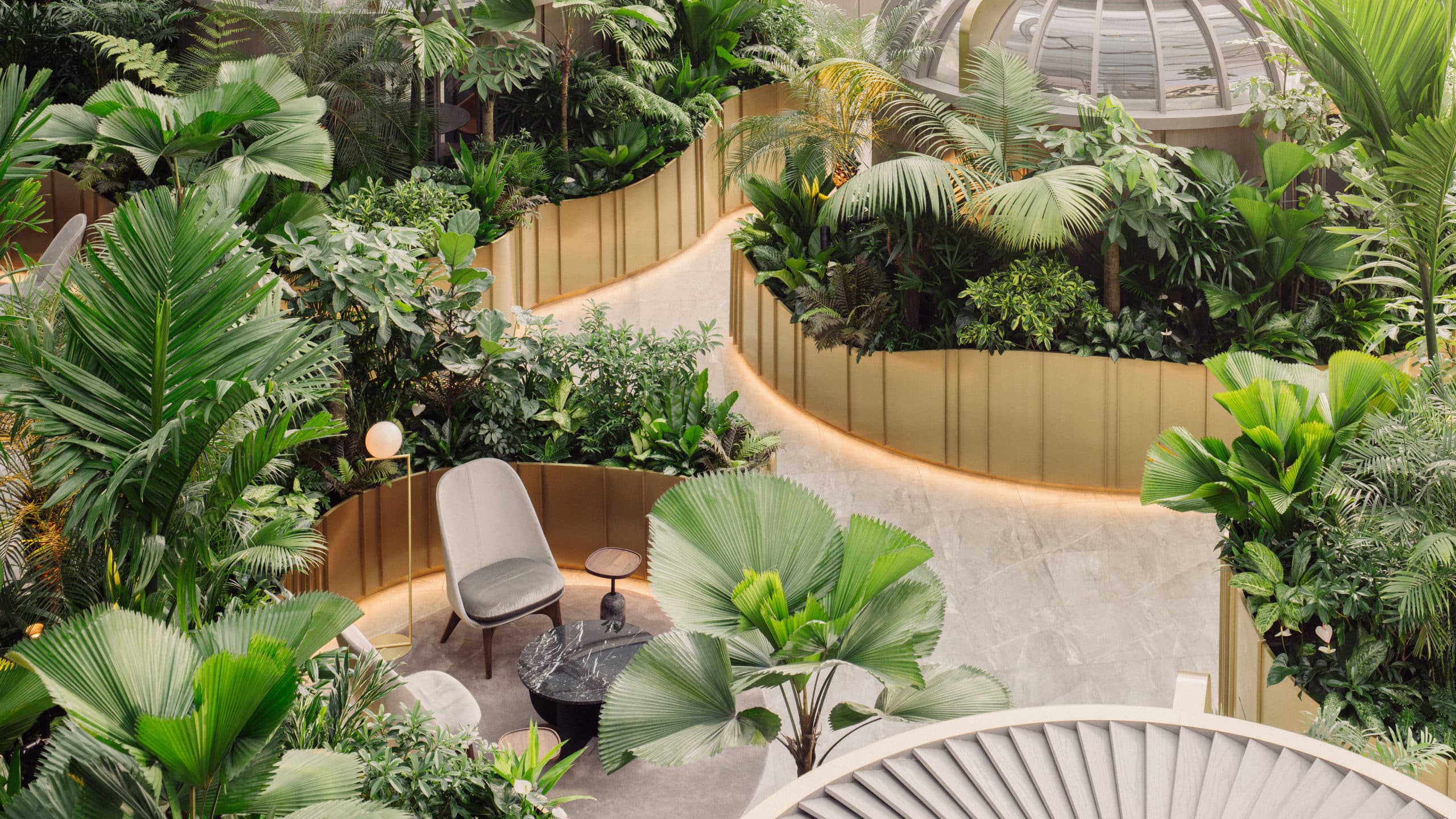Biophilic design: what is it and why does it matter?
We spend a good part of our lives between four walls, at home or in the office, separated from nature, easily turning into an “indoor generation”. At the same time, we begin to realize and feel how much our mood, the space that surrounds us, can affect us. As we move further into cities and spend more time indoors, our interaction with nature diminishes. Biophilic design is a contemporary approach that seeks to harness natural systems in the human built environment.
Concept
The concept of biophilic design originates from “biophilia,” which translates to a love for all living things. Etymologically, it derives from the Greek words “philos” meaning love and “bios” meaning life. This term was popularized by American biologist Edward O. Wilson in the 1980s when he observed that increasing urbanization led to a disconnection from the natural world. Biophilia is becoming increasingly important for our health and well-being within the built environment.


The idea behind biophilic design is to create a stronger connection with nature within indoor spaces, particularly in urban areas, to help us feel more relaxed, sociable, creative, and human. This approach moves away from using concrete and instead emphasizes natural materials and textures, patterns, and shapes reminiscent of nature. It incorporates natural lighting and abundant living plants, creating environments that mimic the outdoors.
5 ways you can integrate biophilic design into your space:
- Opt for furniture crafted from natural materials like bamboo, wood, stone, or rattan to add a touch of humanity to your space. Enhance the environment with decorative elements such as fountains that replicate the soothing sound of water or materials that mimic the rustle of leaves.
- Maximize natural light to uplift the mood. Arrange furniture in a way that allows light to flow freely into the room.
- Incorporate textures and hues that reflect those found in nature.
- Use colours commonly seen in the natural world, such as green, yellow, and blue.
- One of the simplest ways to infuse biophilic design is to fill your home with green elements: abundant potted plants, living green walls, aquariums, or perhaps a view of an outdoor garden.


Benefits
Incorporating direct or indirect elements of nature into the built environment has been shown in research to reduce stress, blood pressure levels and heart rate while increasing productivity, creativity and self-esteem.
We all feel better when we have more nature in our lives. Biophilic design recognizes this truth and helps us make our interior spaces, buildings and even cities much greener and much less grey.



Since 2017, we’ve been bringing the beauty of nature into homes and offices. If you have any questions, we’re here to help both online and at our Orangery, located at 54 M. Kogălniceanu Street.
With a love for plants,
Floral Soul

